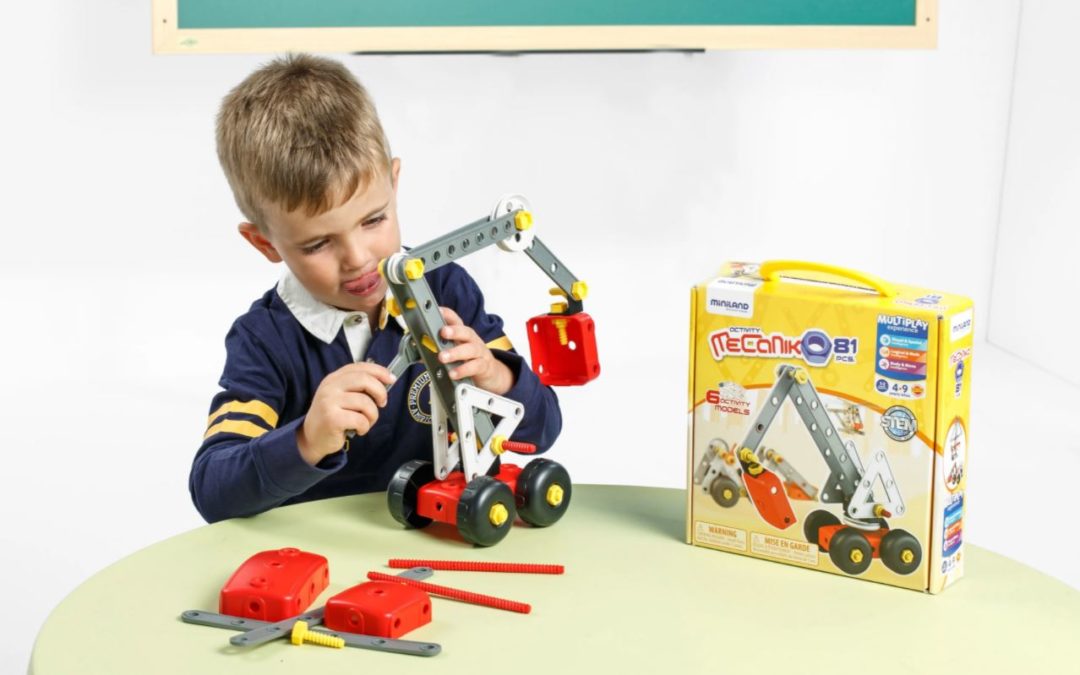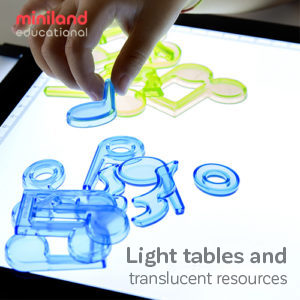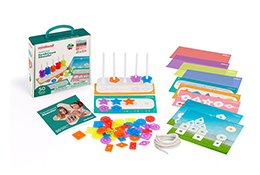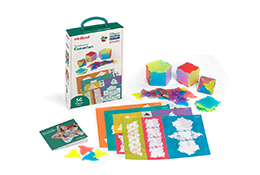Today’s world needs nothing more than mindful, competent, and (com)passionate people; as a teacher of very young children, you play a vital role in providing quality experiences that ensure we build a sustainable future
STEM education is an often overlooked part of the ECD curriculum, but it’s essential to both healthy brain development and an innovative economy. Science, Technology, Engineering, and Mathematics (STEM) are often dismissed as “too difficult”, but there are many ways to debunk this myth. Here are four ways to deliver engaging STEM education in your classroom and to develop the 4Cs along the way (even if you don’t consider yourself a STEM genius).
Tip 1: Embrace Crosscutting Concepts
STEM skills development in children happens best when all four domains (Science, Technology, Engineering, and Mathematics) are interrelated in one lesson and linked to solving a real-world problem. Crosscutting concepts are those that apply to all four subjects — like pattern recognition and cause and effect. You can easily link the STEM disciplines into one lesson by focusing on these common concepts, rather than the subject itself. For example, a real-world problem suggested by the Smithsonian Science Education Center is “How can we provide fresh water to those in need?”.

Imagine posing this question to your class of 7-year olds? With educational toys like Miniland’s Activity Mecaniko, you can facilitate an activity-based lesson on cause and effect that incorporates the whole STEM curriculum. Because these concepts are common to all STEM disciplines, you can tie this experience into additional future lessons.
Tip 2: Establish activity centers through modular classroom design
The 4Cs of Critical Thinking, Collaboration, Creativity, and Communication come into their own in the STEM classroom when children can move around freely to engage with content and their classmates. Designing your classroom to allow them to engage with choice in this way, can help lend a sense of freedom to the lesson even if it has very specific outcomes.
Consider earmarking three areas in your classroom as rotating learning stations — whatever the lesson, your children will know that it’s a place to engage with a fun curriculum-related activity that you’ve selected beforehand. For example, an ECD lesson on the role of technology/engineering in society can be accompanied by an activity center that has Miniland’s Super Pegs laid out.
In this way, children get to engage with representations of technology in context, while also building fine motor coordination that will later serve them in these disciplines. A later literacy lesson can be supplemented with the same station being set up with ABC Monster, a team game that helps them build words they may have learned individually at their desks earlier in the day.
Tip 3: Make use of educational toys
Activities linked to educational toys are a great way to roll-out the project-based learning (PBL) that’s at the heart of effective STEM education. While your modular classroom design lays the groundwork for PBL, it truly comes into its own when combined with supporting educational toys. It’s all about inspiring a sense of discovery — posing a question based on a real-world problem and then creating opportunities for your class to try out solutions. Miniland’s Mosaic Art is a wonderful example of how children can learn experientially about the connections between geometry and engineering. It is also a useful tool to use when trying out engineering solutions for machines that may, for instance, help solve the question posed earlier of how to get fresh water to those in need.

Tip 4: Engage parent volunteers
Your parent body is often the most untapped resource available to help you deliver a thorough and engaging 21st century STEM education to your children. Engaging parent volunteers does take some managing, but with a little planning up front you may find that it pays off in a greatly diversified learning experience.
Consider engaging them as facilitators/assistants in activities that may not be directly related to the STEM curriculum, but that ensure the type of skill development in children that lays the foundation for attentive engagement later. Miniland’s Mindful Kids program is one place to start. This learning aid facilitates 36 activities that develop mindful self-awareness and emotional self-regulation in children, so they’re better able to focus when the time comes for the sometimes scary math lesson.
By exploring STEM concepts & experiences in the classroom, children will develop a healthy brain and a passion for these disciplines. We’ve dedicated ourselves to creating a line of educational toys that will help you deliver an effective education, creatively. To learn more, visit our catalog today.




